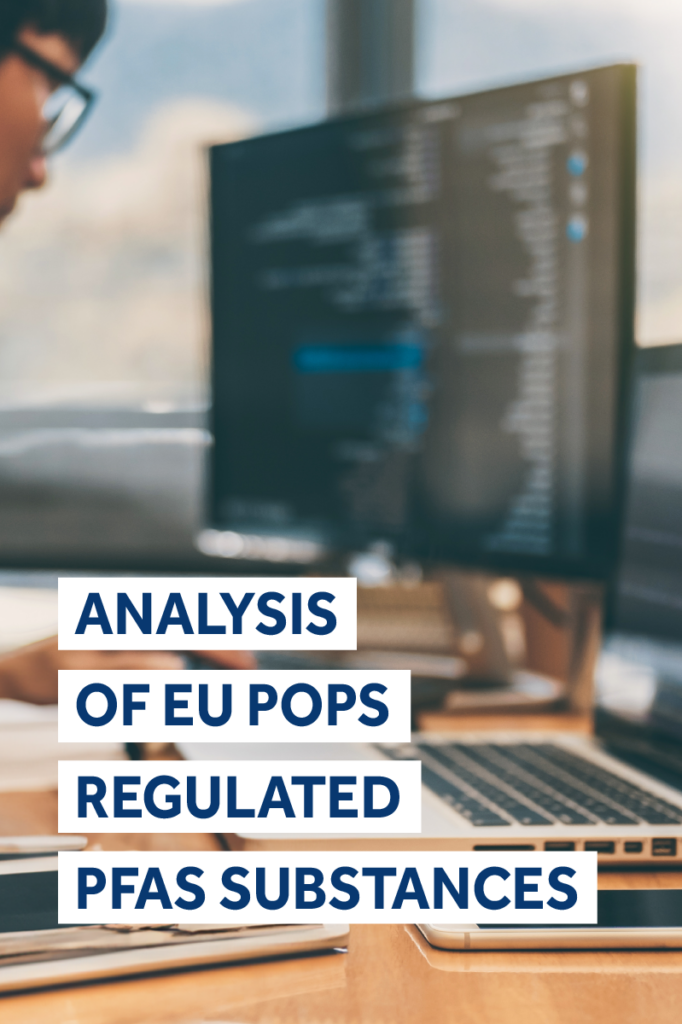PFAS
April 3, 2024 | Written by GreenSoft Technology, Inc.
Analysis of EU POPs Regulated PFAS in Common Parts Database

Crucial Revelations on EU POPs Regulated PFAS in Electronic Components
In recent years, per- and polyfluoroalkyl substances (PFAS) have garnered significant attention. These “forever chemicals,” known for their widespread use and potential environmental and health hazards, have faced increasing scrutiny.
Three PFAS substance groups have been restricted under the EU Persistent Organic Pollutants (EU POPs) regulation, but some commonly used electronic components still contain these restricted PFAS.
GreenSoft Technology recently performed an analysis of our Parts Database, which contains Full Material Declaration (FMD) data on millions of electronic components and other parts. Our analysis found that over 400 parts were in violation of the EU POPs regulation due to containing one or more substances regulated under EU POPs. And 93 of those non-compliant parts contained one of the three PFAS substance groups restricted under EU POPs.
Key Discoveries
- Total Violations: Examining the parts in our database, we discovered that 409 parts were found to be in violation of the EU POPs regulation. 58 total substances/substance groups restricted under EU POPs were identified in the violating parts.
- Restricted PFAS Substances: Among the violators, 93 parts contained one of the three restricted PFAS substance groups. 32 parts contained Perfluorooctane sulfonates (PFOS) substances; 33 parts contained Perfluorooctanoic acid (PFOA), its salts and PFOA-related compounds; and 28 parts contained PFHxS substances.
- Timeline of Restrictions: Since 2019, Perfluorooctane sulfonates (PFOS) and Perfluorooctanoic acid (PFOA) substances have been restricted under the EU POPs regulation, and since 2023 perfluorohexane sulfonic acid (PFHxS), its salts and PFHxS-related compounds have been restricted under the EU POPs regulation.
- Parts Breakdown: The most common parts found to contain PFAS substances were foams, amplifiers, resistors, coils, labels, and inductors, among other components.
Implications and Preventative Actions
With the discovery that some commonly used electronic components continue to contain PFAS substances that are restricted by the EU POPs regulation, electronics manufacturers should take proactive measures to mitigate potential loss of market access due to regulatory violations.
Identifying which components in your supply chain are likely to contain these restricted PFAS substances is a crucial first step for manufacturers to comply with the EU POPs regulation.
Get help with Persistent Organic Pollutants and other PFAS Regulations
GreenSoft Technology’s Data Services solution can assist companies in identifying PFAS in their products by collecting chemical data from their supply chain. Our data collection team will contact your suppliers on your behalf to obtain data on the substances contained in your products and components, and validate that data for completeness and accuracy.
Additionally, GreenSoft Technology can help source replacement suppliers and generate compliance reports for various global environmental regulations, including EU POPs and dozens of others. We also offer GreenData Manager (GDM) software so you can manage your company’s substance database and easily generate substance and compliance reports.
Contact us to learn more about how we can help your company navigate the complex landscape of regulatory compliance in the electronics manufacturing industry.





